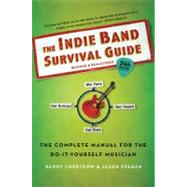
What is included with this book?
RANDY CHERTKOW (by day, a tech expert) and JASON FEEHAN (by day, an attorney) are lead members of Beatnik Turtle, a rock band based in Chicago, Illinois. Beatnik Turtle plays live, has produced eighteen albums, written music for TV, films, comedy shows at Second City, and has licensed music to ABC Family—all without a label.
The New copy of this book will include any supplemental materials advertised. Please check the title of the book to determine if it should include any access cards, study guides, lab manuals, CDs, etc.
The Used, Rental and eBook copies of this book are not guaranteed to include any supplemental materials. Typically, only the book itself is included. This is true even if the title states it includes any access cards, study guides, lab manuals, CDs, etc.